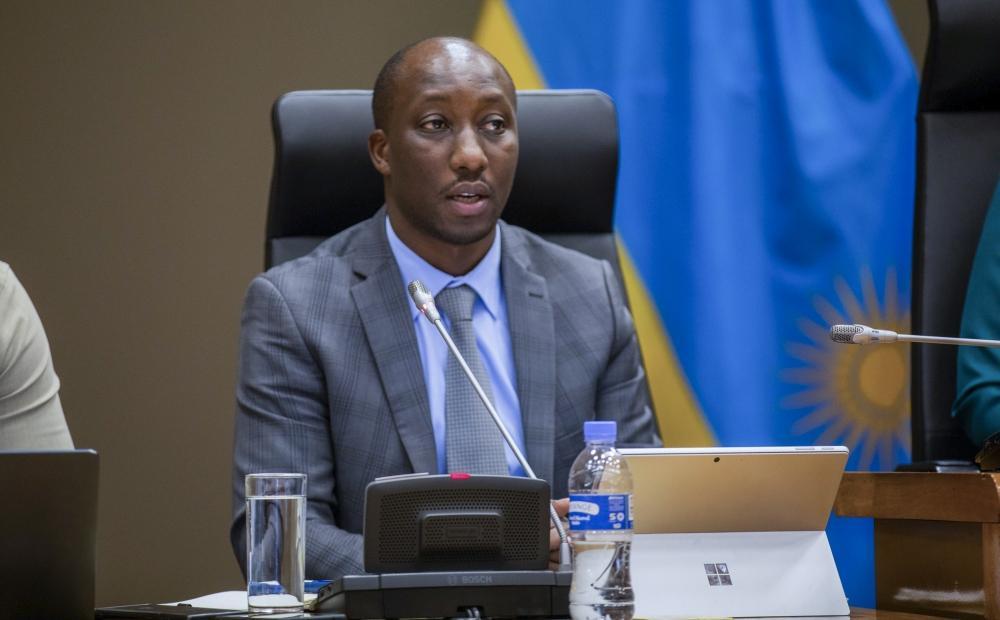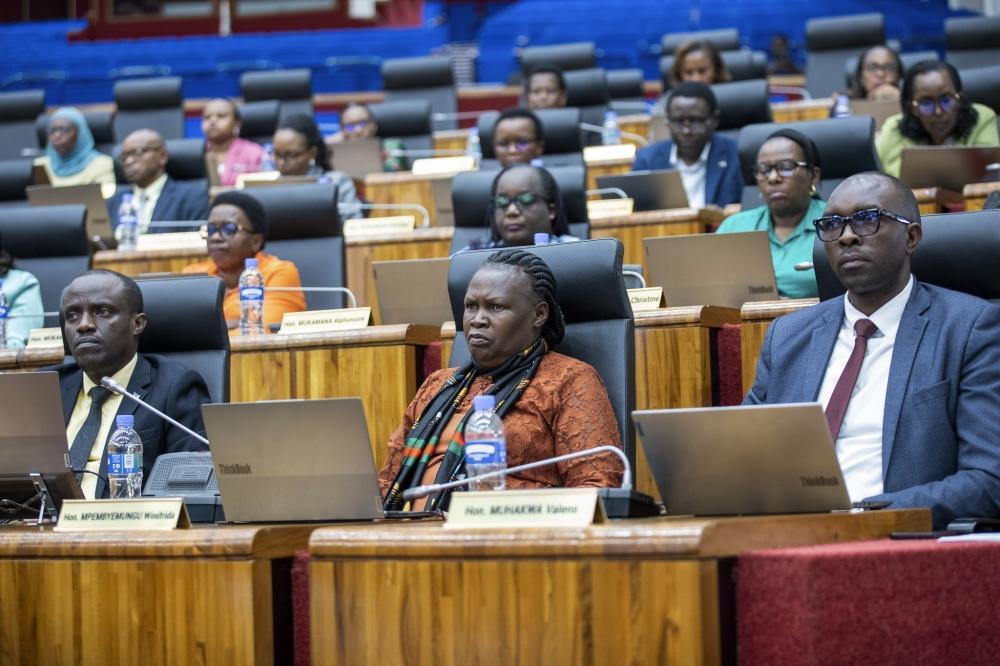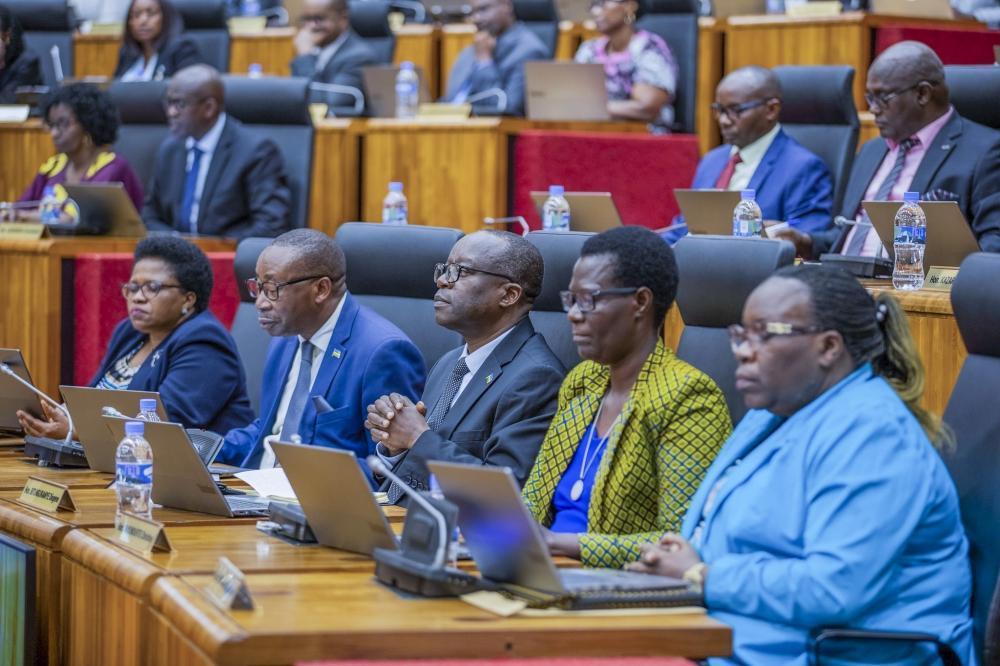Africa-Press – Rwanda. The government plans to establish City Management Offices (CMOs) in all its secondary and satellite cities to strengthen urban management and improve service delivery, as part of the newly revised National Urbanisation Policy (NUP) adopted in February 2025.
This was stated by the Minister of Infrastructure, Jimmy Gasore, as he delivered a presentation on the policy to Parliament on November 11.
He said that such offices are expected to be established by 2026.
The new policy, which updates the 2015 version, seeks to transform Rwanda’s urban landscape by promoting balanced and sustainable development beyond the capital, Kigali. It aims to raise the urban population rate from 27.9 per cent in 2022 to 52.7 per cent by 2035, and about 70 per cent by 2050, while ensuring equitable and climate-resilient urban growth.
Members of Parliament follow Minister Gasore’s presentation on Tuesday, November 12. Photo by Craish BAHIZI
Rwanda currently has three satellite cities — Bugesera, Rwamagana, and Muhanga — and eight secondary cities: Musanze, Rubavu, Rusizi, Nyagatare, Huye, Karongi, Kayonza, and Kirehe.
The establishment of CMOs in these cities is expected to enhance coordination between local and national authorities, improve infrastructure management, and promote sustainable urban growth across the country, according to the policy.
Dedicated offices for city management
Gasore said the creation of CMOs is one of the key measures under the policy’s coordination pillar.
These offices, he said, will be established in secondary and satellite cities to coordinate urban management, infrastructure development, and service delivery.
“This is another entity that supports city management,” Gasore said, adding that until now, such an office has only existed in the City of Kigali.
“We want to extend it to all cities so that local governments can better manage and maintain urban infrastructure,” he said.
Under the new framework, CMOs will be responsible for overseeing day-to-day city operations, handling technical and administrative functions, and ensuring coordination among district departments and national government agencies.
According to the policy document, rapid urbanisation in secondary and satellite cities has exposed challenges such as limited funding, weak coordination between central and local authorities, and inadequate technical expertise at the district level.
To address these gaps, the proposed CMOs will coordinate strategic planning, budgeting, and implementation of city development plans; oversee urban infrastructure maintenance and service delivery; facilitate citizen engagement and local revenue collection; and support enforcement of urban planning and construction standards.
Gasore said that under the policy, budget allocations to districts hosting secondary and satellite cities will be determined based on population size, economic potential, and local development priorities to address disparities.
A comprehensive roadmap will guide the establishment and operationalisation of CMOs, ensuring they have the necessary resources, skilled personnel, and autonomy to perform effectively.
MPs during a session as Minister Gasore presents the National Urbanisation Policy on Tuesday, November 11. Photo by Craish BAHIZI
During the parliamentary session, MP Jean Claude Mazimpaka urged the government to expedite the creation of CMOs, warning that delays could lead to unplanned settlements and inefficient urban growth.
“The longer we delay implementing this policy, the more costly it becomes for the government,” he said. “In districts where these cities are located, managing the link between rural and urban areas already exceeds the capacity of local leaders. This lack of specific city management leads to unplanned settlements and poor planning.”
In response, Minister Gasore said that the Ministry of Local Government, which oversees districts and their respective cities, is finalising implementation plans.
“We expect that by 2026, all districts with secondary and satellite cities will have a City Management Office,” he said, adding that these offices will oversee areas such as housing, waste management, and public transport services that are currently lacking in many cities.
As of 2022, the country’s urban population stood at more than 3.7 million, representing an urbanisation level of 27.9 per cent, according to the policy blueprint. Kigali accounted for 41 per cent of the total national urban population.
Overall urbanisation targets, such as reaching 35 per cent by 2024 as outlined in Vision 2050, were not achieved. The strategy noted that slower growth outside Kigali was due to several factors, including the capital’s strong appeal as a key labour market, and the lack of clear economic or social incentives and rural-urban linkages for cities outside the capital.
For More News And Analysis About Rwanda Follow Africa-Press








